
New experiments conducted on mice have indicated that restoring brain plasticity might hold the key to reversing age-related cognitive decline.
The experiments focused on inhibitory interneurons in the visual cortex. These sensory neurons have rarely been studied to date, however, they’re believed to be crucial to brain plasticity.
Mice at several key ages were used in the study, and this was important because the researchers wanted to track the decline in inhibitory brain cells as the mice aged. The research found that there was no significant age-related decline to speak of.

With that being said, the researchers did note a decline in several plasticity markers. The growth of dendrites, which are branches that connect neurons to each other, were observed to slow down progressively between the ages of three (when mice reach maturity) and 18 (when mice can be considered old) months. This is one of the key factors that prevents the brain from remodeling itself, thus reducing plasticity.
Another plasticity marker that was used for measurement is the stimulus-selective response potentiation. It essentially allowed the researchers to see how well the mice responded to visual stimuli, and they found that these responses declined with age. In fact, SRP measurements were solid for three months, but almost nonexistent by the time they reached nine months.
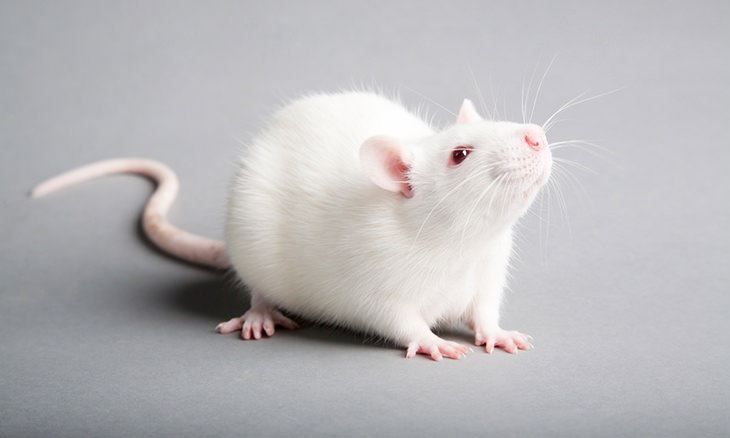
Last but not least, the researchers devoted the final part of the study to finding out whether plasticity reduction in the mice’s brains could be reversed. They used a drug called fluoxetine, which is more commonly known as Prozac, in three-month-old mice. They were treated with the drug for at least six months and displayed significant improvements in all plasticity markers.
"Our finding that fluoxetine treatment in aging mice can attenuate the concurrent age-related declines in interneuron structural and visual cortex functional plasticity suggests it could provide an important therapeutic approach towards mitigation of sensory and cognitive deficits associated with aging provided it is initiated before severe network deterioration," the researchers wrote.

Although the new hypothesis for normal age-related decline is compelling, using fluoxetine as a therapeutic agent isn’t especially practical. For instance, its side effects mean that it isn’t recommended for use by the elderly, and it would have to be administered at a young age, and for a very long time, for it to have any effect. The latter points are also based on the assumption that the drug’s effects on mice could be replicated in humans, which would take years of clinical trials to prove definitively.
Nevertheless, the study found that a decline in brain plasticity has the potential to be reversed, meaning that age-related cognitive decline we’ve come to accept as just part of getting older might actually be able to be managed in the future.
Images by Deposit Photos.

Did You Know You're Intelligent If You Have These Traits?
There are certain signs of intelligence that are actually quite subtle. Here are 10 subtle signs that are hallmarks of intelligence.

Depression Can Be Eased By Taking a Hot Bath, Study Finds
A small study conducted at the University of Freiburg has found that taking a daily bath might be good for depression. Read more about the study here.

Red Meat Allergens Can Increase Heart Disease Risk
Red meat has long been linked to heart disease, but a new study marks the first time that the allergens it contains can increase the risk of contracting it.

Forget Apples! It's an Egg a Day That Keeps the Doc Away...
According to new research, it could actually be an egg a day that keeps the doctor away.Find out more here!

Determine If You're a Type D Personality With This Guide
The D in Type D personality stands for "distress", which refers to the heightened level of the emotion that Type D people tend to feel. Find out more here.

Can You Really Get Food Poisoning From a Humble Tea Towel?
If you've seen some alarmist reporting regarding tea towels and food poisoning recently, there's no need to worry. Here's more information on the study.

Science News: New Wonder Mushroom Cleans the Air
Let's learn about a magical new mushroom that is not only enriching the soil for farmers but also capturing CO2 from the air!

10 Unanswered Mysteries You've Always Wondered About!
You might not have thought about the most curious cases of the bizarre things that we encounter every day.
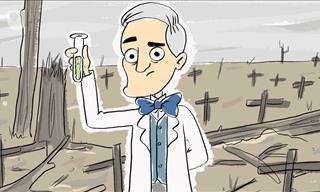 1:44
1:44
The Accidental Discovery of the World’s First Antibiotic
Not too long ago, it was fairly common to die of the simplest of wounds due to bacterial infection. Penicillin changed everything.

These Ancient Inventions Have Got Scientists Stumped!
Here are 12 items from long ago which prove that our ancestors possessed knowledge and skills far more advanced than we once believed them to be.
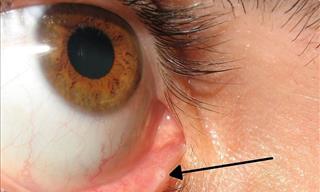
7 Little-Known Body Parts We Never Knew About
Here's a look at some of the weird and little-known body parts that you didn’t know you had.

Study: New Link Found Between Parkinson's and the Gut
A recent study has identified gut microbes likely involved and linked them to decreased riboflavin (vitamin B2) and biotin (vitamin B7), suggesting a potential treatment

Incredible New Bionic Arm Fuses With Woman's Nerves
Karin's bionic hand is real sci fi, making her one of the first true cyborgs.

17 Incredible Eye Facts You Have To See To Believe
They say the eyes are the window to the soul, and they also happen to be our windows to the world. Here are 17 insanely fascinating facts about eyes.
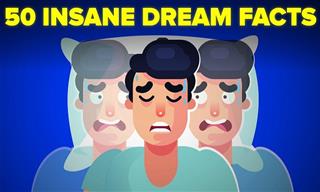 30:04
30:04
50 Crazy But True Facts About Dreams You Need to Know
Here are some strange and unusual facts about dreams that will surprise you.
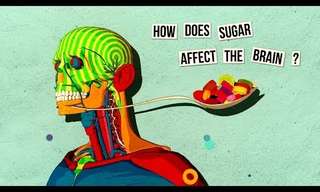 5:03
5:03
WHY is Sugar So Devilishy Addictive?
There seems to be a fascinating scientific explanation for why our will power is weak when it comes to sugar!

Can One Photo Really Tell How Good Your Eyesight Is?
Scientists say that this single photograph can tell you whether you have good vision or not. Who can you see in the image?

These Photos Show How Dependent We are On Smartphones
Technology has taken over and these funny (but true) photos help to drive this fact home.

6 Signs That Someone is Listening on Your Cellphone Calls!
With technology advancing all the time, there is the ever-increasing chance of our phones being tapped. Here are 6 signs that your phone could be tapped.

When Under a Microscope, Even Ordinary Things Seem Alien
Have you ever given any thought to what every day things look like under a microscope? Some of these images are truly beautiful - see for yourself in the images below.
 6:21
6:21
How to Make Cleansing Hydrogen Water from an Old Battery
Let's embark on this scientific journey to unlock the potential of water and discover the practical uses of hydrogen and oxygen in everyday life.

7 Weird Facts About the Human Voice That Will Surprise You
We bet you didn’t know these peculiar facts about the human voice.
 8:14
8:14
What Would You Do if You Had an Extra Thumb?
This revolutionary invention has the potential to revolutionize the field of prosthetics.

There are Some Great Secrets Found in Mathematics...
Numbers hold some great secrets - they even tell us about life!
 5:01
5:01
The Truth About Folding Phones You Need to Know
Don’t buy a foldable without knowing this first.

20 Useful Facts About the Science of Cooking
The science behind cooking is not often thought of, but it plays a crucial role in a dish turning out right. Here are 20 facts on the science of cooking.

9 Recent Groundbreaking Discoveries You Need to Know About
These recent breakthroughs will revolutionize our world.

The Facts You Didn't Know About the Human Body...
Discover 120 fascinating and surprising facts about your body you may not have known. Going over most of the body parts, you will learn so much you never knew about the body we all use.
 8:05
8:05
This Giant Tank Will Unlock the Universe’s Big Mysteries
Japan is building a huge underground tank inside a mountain to help unlock the many mysteries of the universe.

These Optical Illusions Will Shock Your Mind!
Optical illusions create miscommunication between our eyes and brain making, us see things that are not really there or not see things that are right in front of us. See for yourself.
 13:01
13:01
13 Incredible ROOF INNOVATIONS For Your House
Keep the roof of your house safe with these incredibly useful inventions.
 7:15
7:15
Toilets: The Greatest Medical Advancement in Human History
While toilets make some people laugh, they are actually a deadly serious medical advancement. This video explains what toilets mean to civilization.

Wonder Why Time Speeds Up As You Age? Here's the Answer
We all get the sensation that time moves faster as we get older, but there are scientific reasons for that. Read on to learn about this fascinating phenomenon.

8 Ancient Greek Scholars & Their Life-Changing Inventions
The foundations of modern medicine, engineering, biology, and astronomy were set up by these 8 stellar minds more than two thousand years ago.
 26:43
26:43
These 20 Tech Inventions Will Define the Next Decade
The future is here. Check out some emerging technologies that are all set to chane our world forever.

25 Feats of Engineering that Leave Everyone Amazed
The amount of planning and sheer brain power it took to design and execute these structures, proving once again that there are true geniuses out there.

The Difference Between Mined and Lab-Created Diamonds
If you're seriously considering buying a loved one a diamond, then we highly recommend that you read this informative guide first!

20 Amazingly Simple Inventions That Make Life Easier
Some wonderful inventions can fix some of the most annoying little problems that bug us every single day. Here are 20 of the most inventive ideas I've ever seen that I can't believe no one has invented before.

GUIDE: How Alcohol Affects Us, Drink by Drink...
In this article, we're going to discuss the exact amounts of alcohol in our blood and what they look like, including how each level affects us and our ability to function.
 16:55
16:55
Sleep Inventions: 16 Gadgets to Help You Doze Off
If you frequently struggle with sleep, then trying these amazing new sleep innovations could help change your life.
 5:48
5:48
3 Surefire Ways to Always Identify Pseudoscience
Find out how you can identify pseudoscience, and learn how it differs from actual science.

These 18 Photos Capture the Universe Like Never Before!
See the universe in a new light with these astonishing photos.

Nobody Believed These 5 Scientists, But They Were Right
These 5 scientists were shamed and ousted, or rudely ignored, although years later, their "crazy" theories turned out to be true...

16 Interesting Things We Bet You've Never Seen Before
Once we have finished school and learned all the necessary skills at work, it may seem that no further studying is necessary. 16 interesting photos you wish you had seen in textbooks at school.
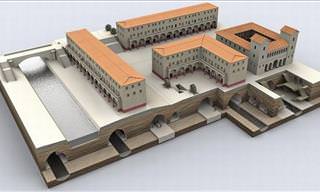
Six Inventions Da-Vinci Made Ahead of Their Time
He created and envisioned many inventions that were sometimes even centuries ahead of their time. Was there ever a genius as great as Da-Vinci?
 5:39
5:39
Why Are Your Ears Ringing? The Causes Explained
Nearly 15% of the human population worldwide are plagued by this strange sensation, but most people don't know the causes behind ringing in the ears...

These Theories About Reality & the Universe Will Stun You
You will be shocked to discover these 10 surprising theories of the universe and reality.


